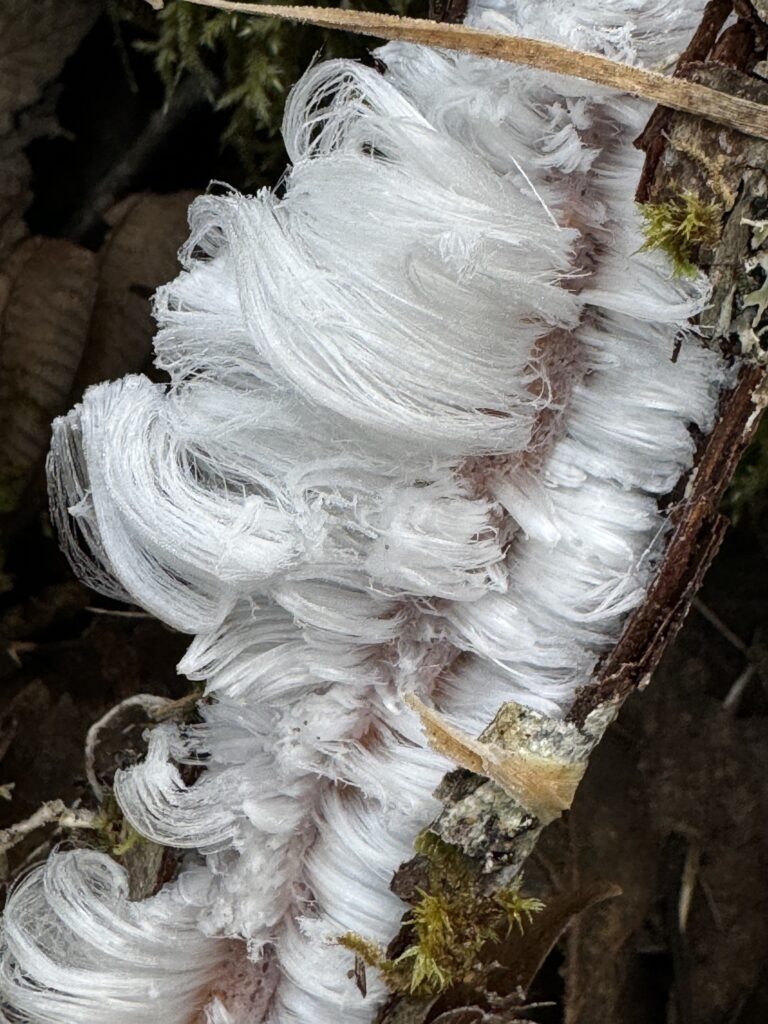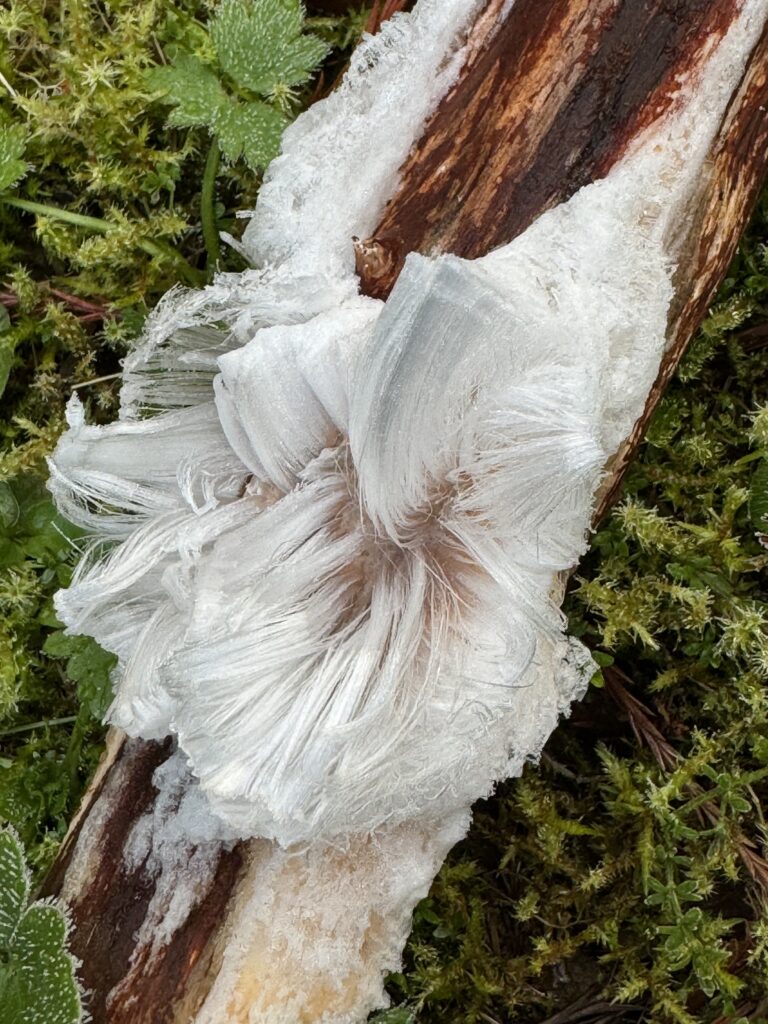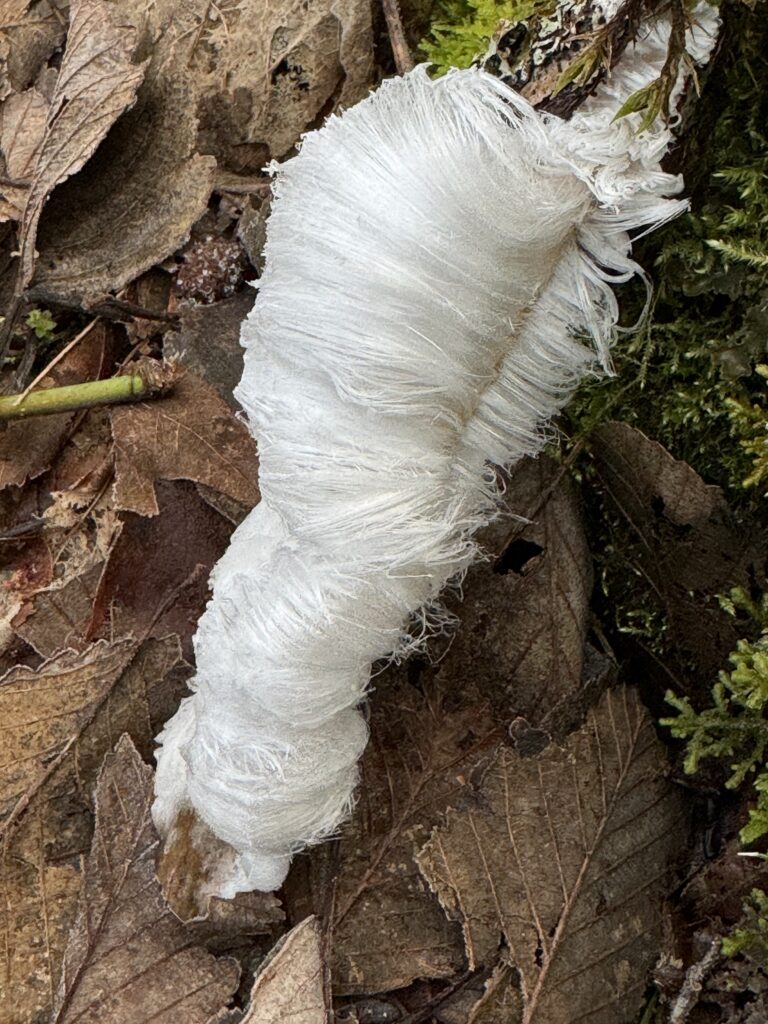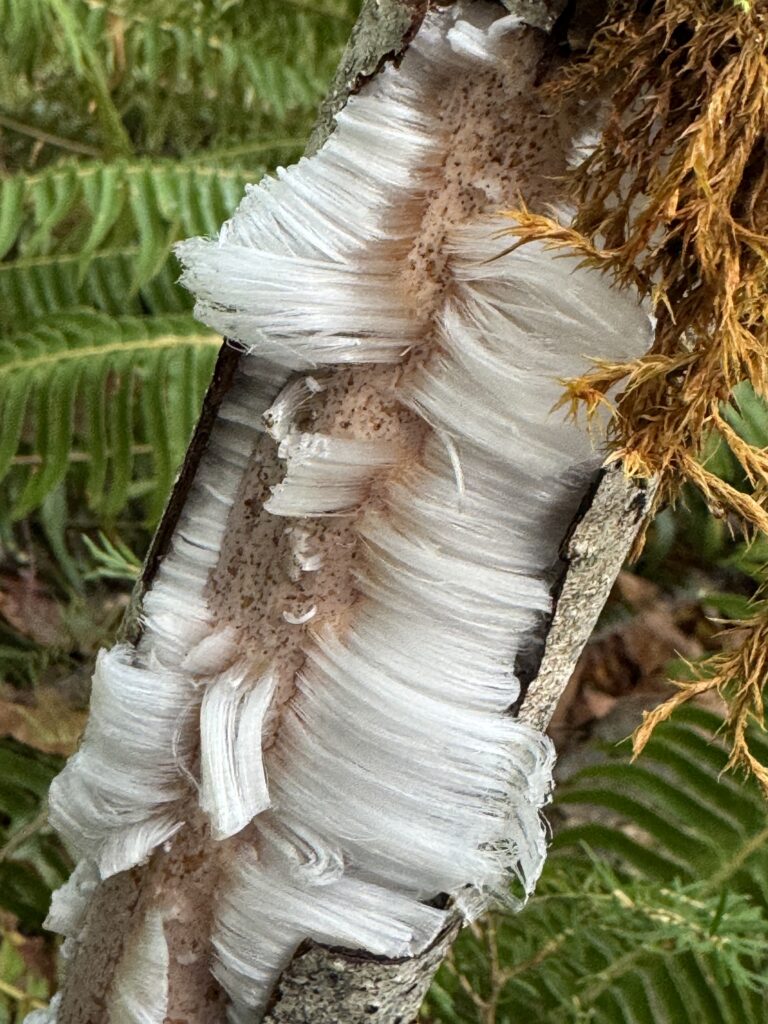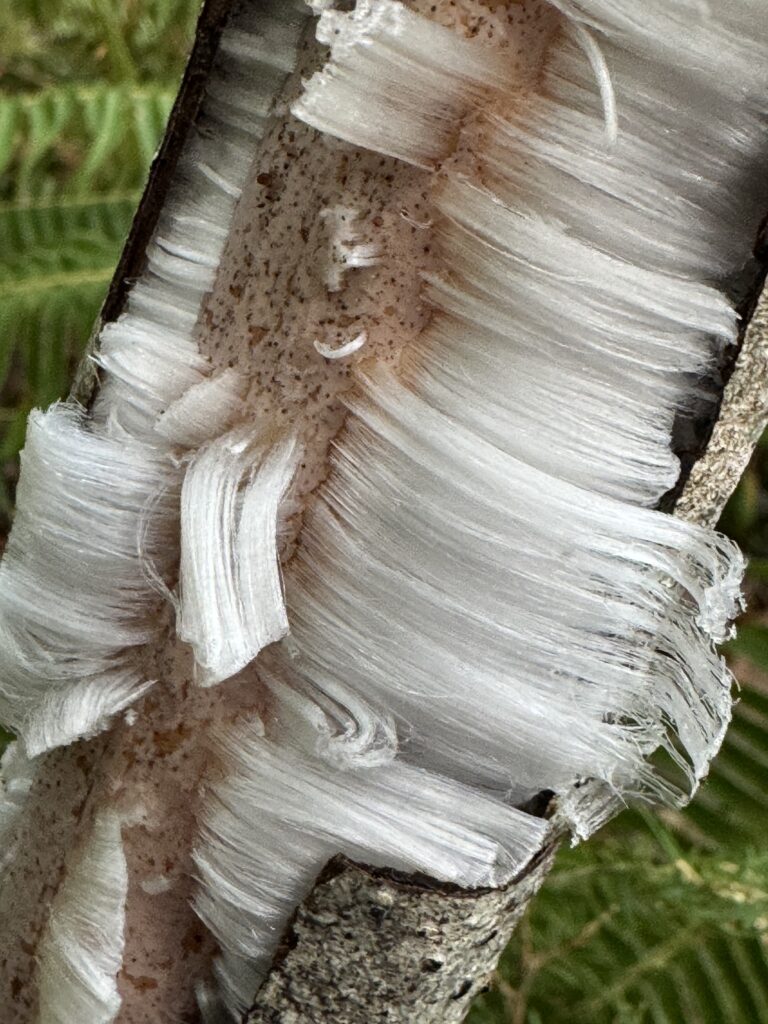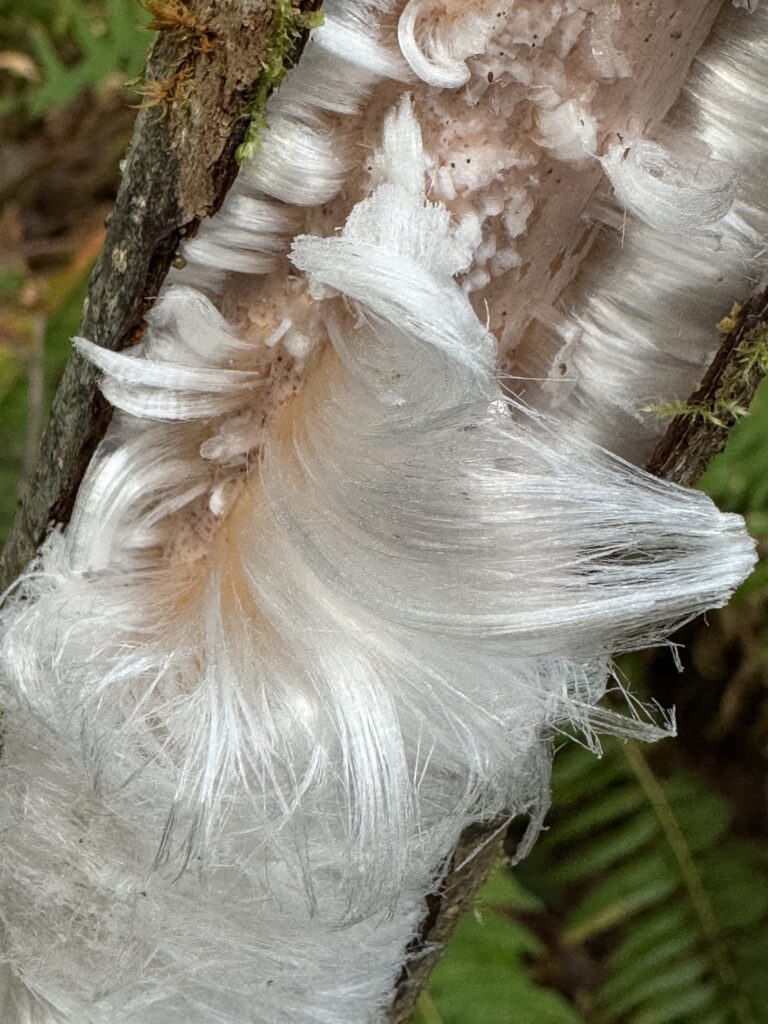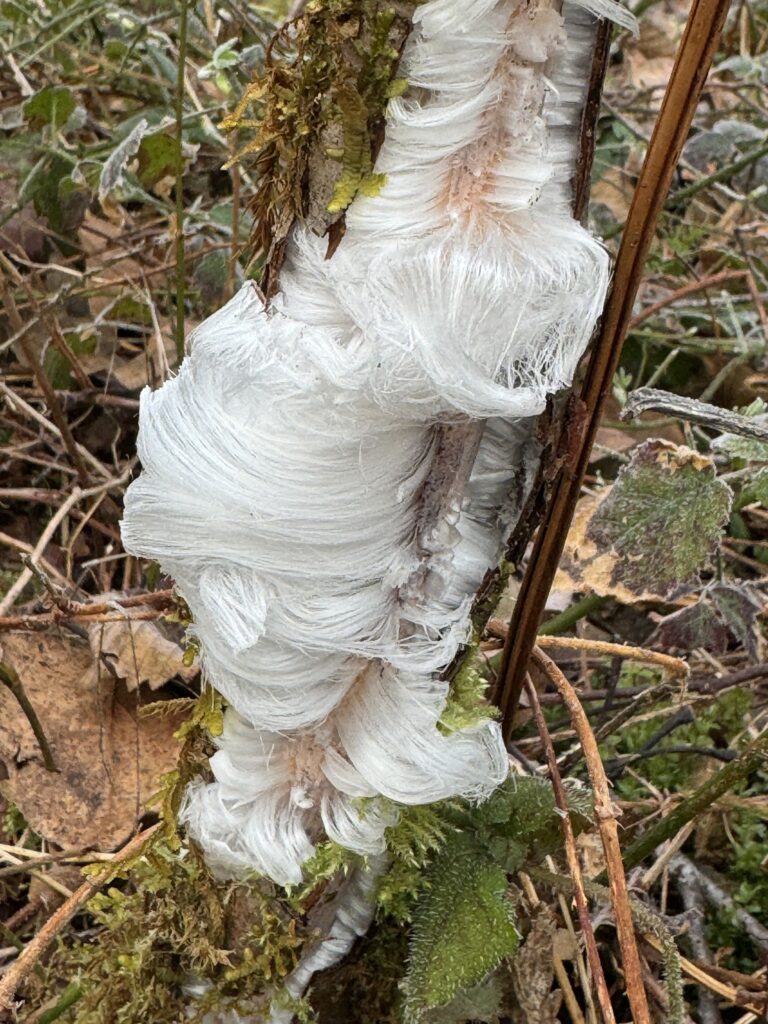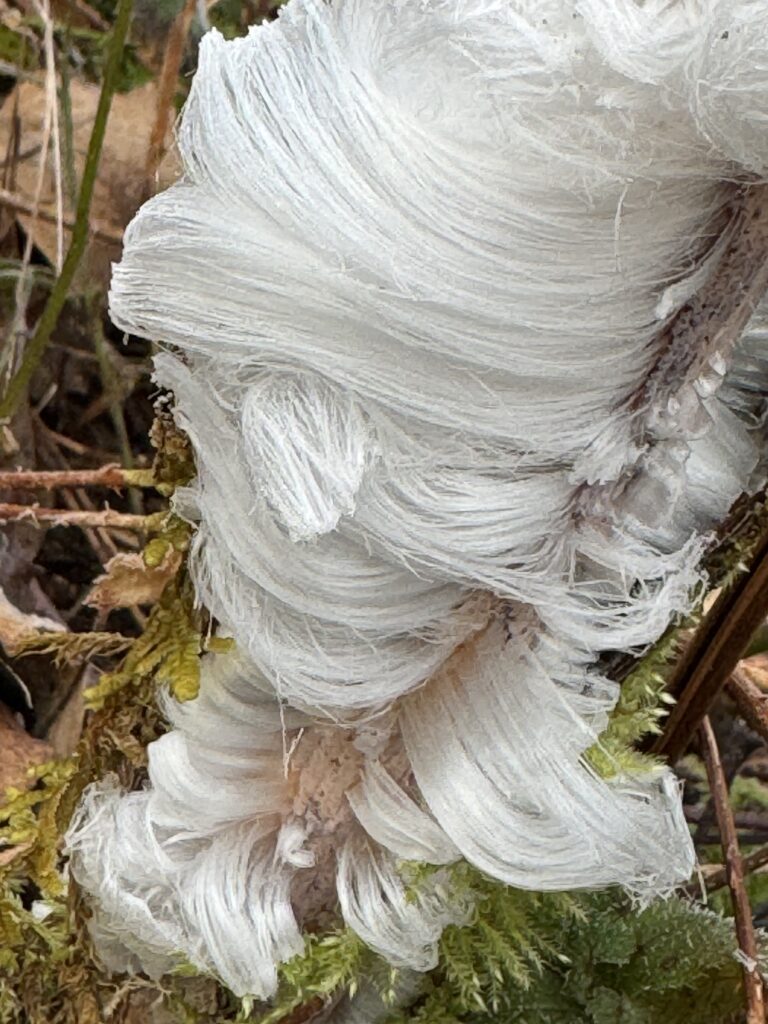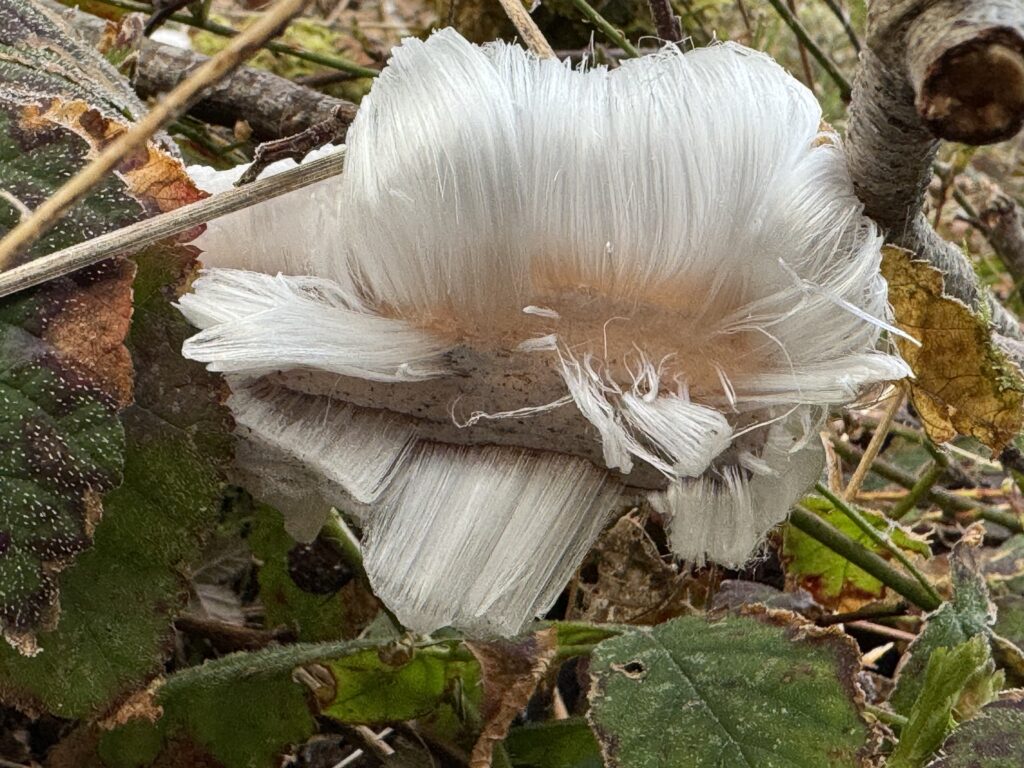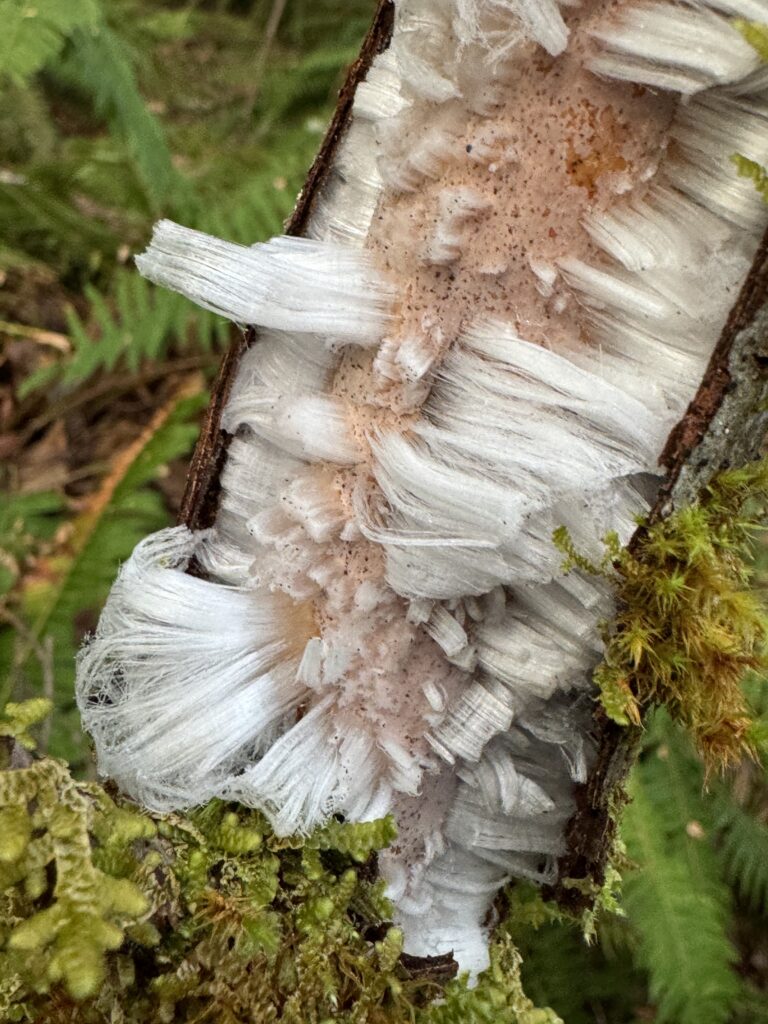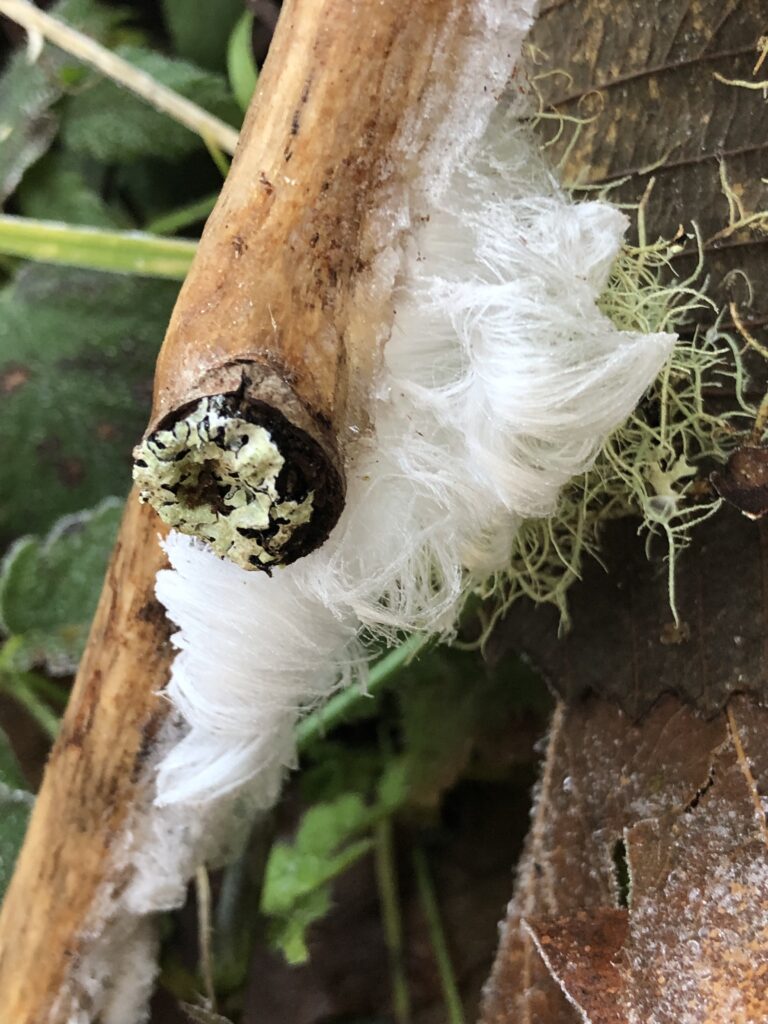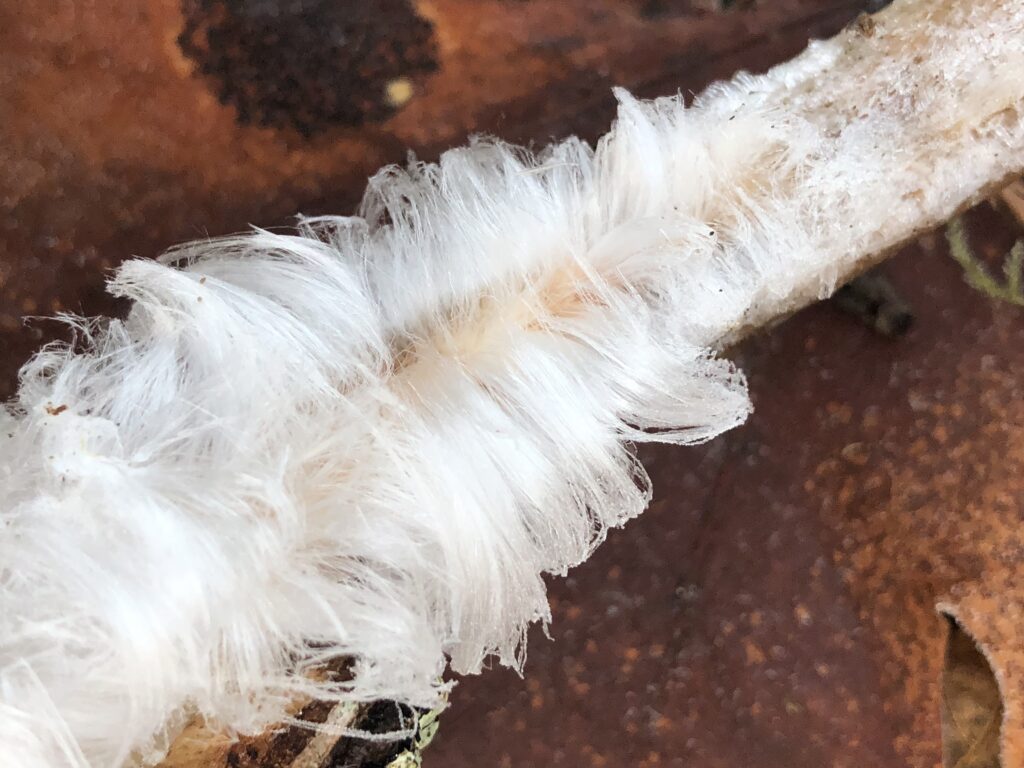We had the correct conditions for frost flowers (hair ice) two days last week: overnight Tuesday (with pictures Wednesday morning) and overnight Wednesday (with pictures Thursday morning).
This sort of clustering is common, because the clear day/cold snap (for us!) conditions required for frost flowers tend to cluster.
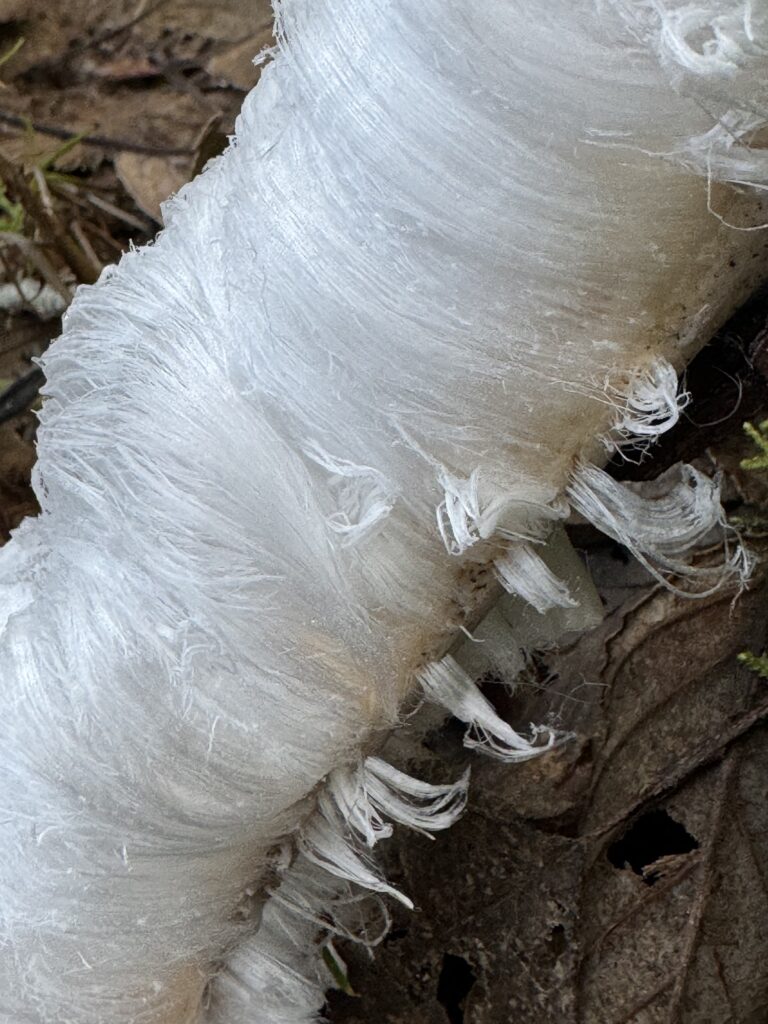
Yesterday I talked a bit about the conditions that allow frost flowers and hair ice to “grow”; today I want to talk a little bit about photographing frost flowers, with a focus on my latest experience with the iPhone 15.
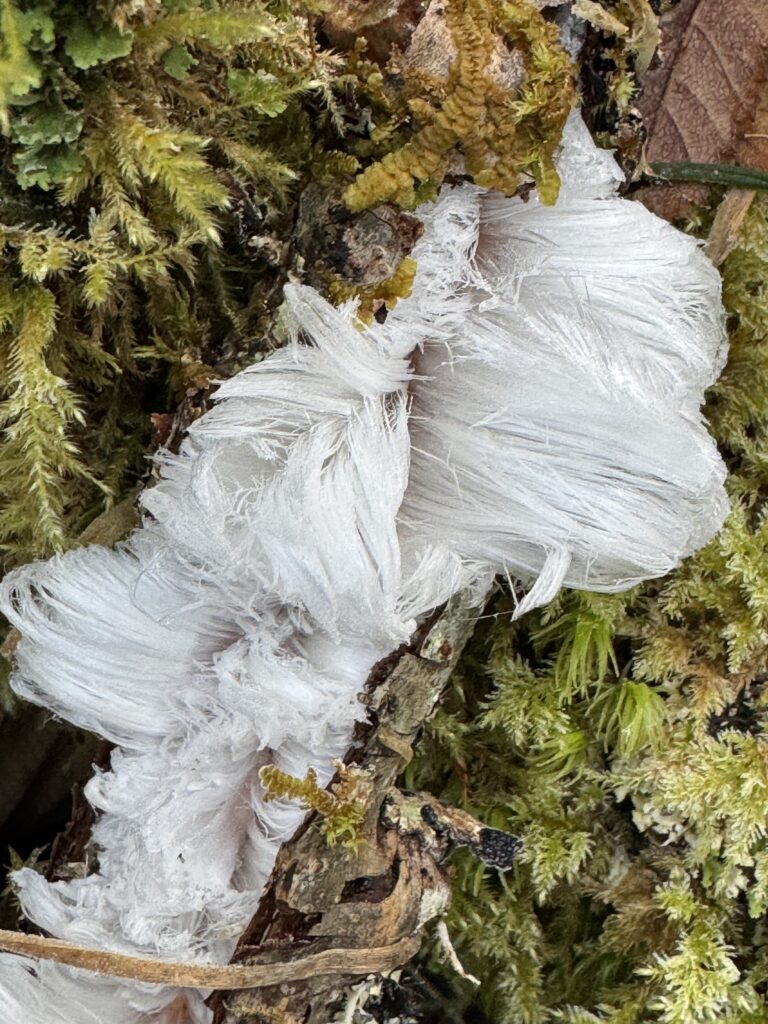
I have been photographing frost flowers for a few years now. I saw my first frost flowers on a cold morning along the Elwha river in 2015. The following winter, I discovered them growing in our home woods in Port Angeles.
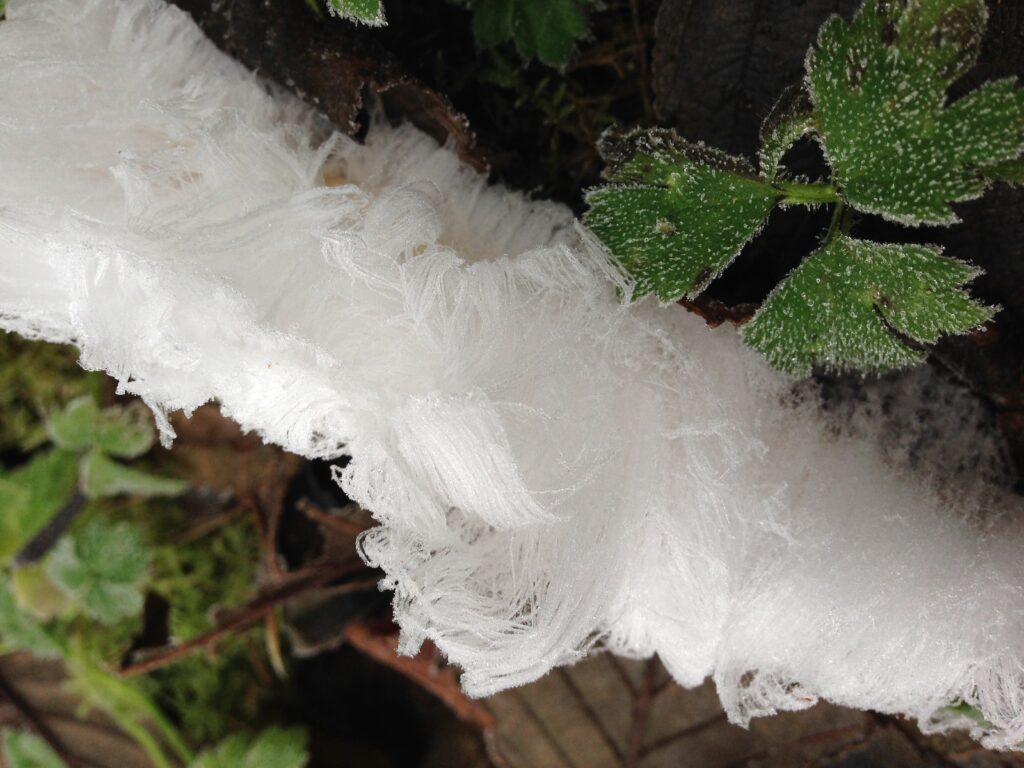
When we moved to Olympia, I was delighted to discover that our local woods “grew” frost flowers even more frequently than our Port Angeles woods. Since moving, I have been photographing frost flowers happily with an iPhone 10, sometimes in combination with a hand lens.
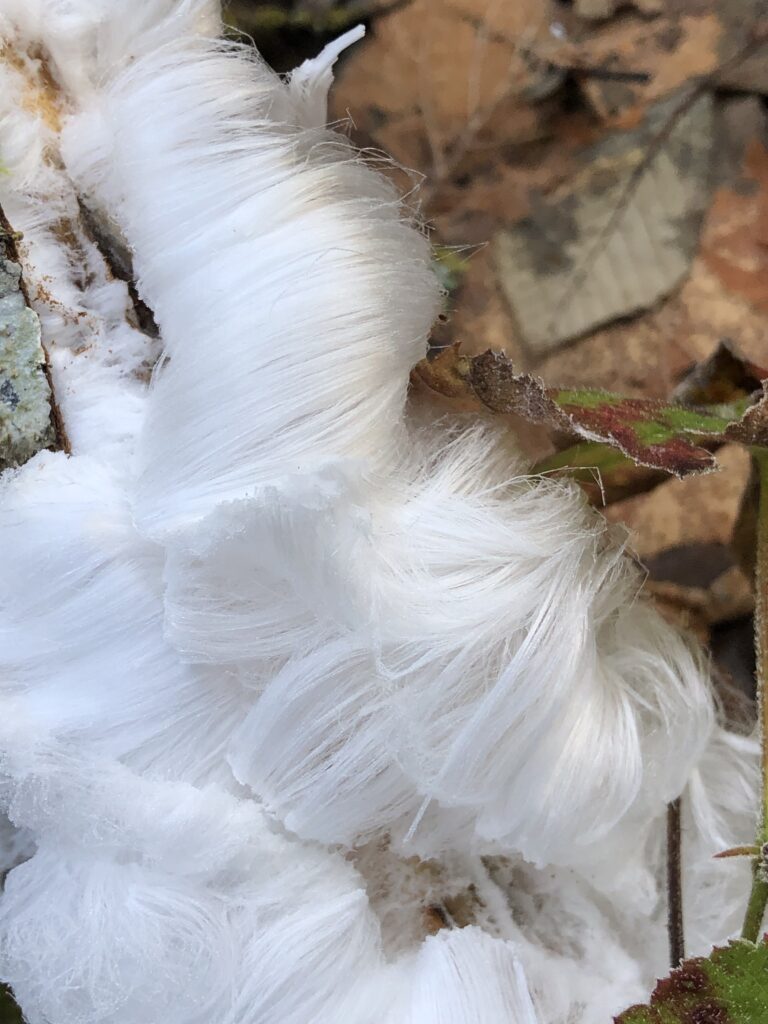
I was able to get some great frost flower pictures with my iPhone 10, and was generally delighted with its macro quality. However, it did tend to lose detail when there was any degree of light; it would all just go to white (as in the top of this picture).
When I got my iPhone 15 pro a couple weeks ago, I was initially extremely excited about its macro potential. However, a couple experiments with flowers had me concerned. This flush of frost flowers was my first opportunity to try my new camera (phone) with one of my favorite subjects.
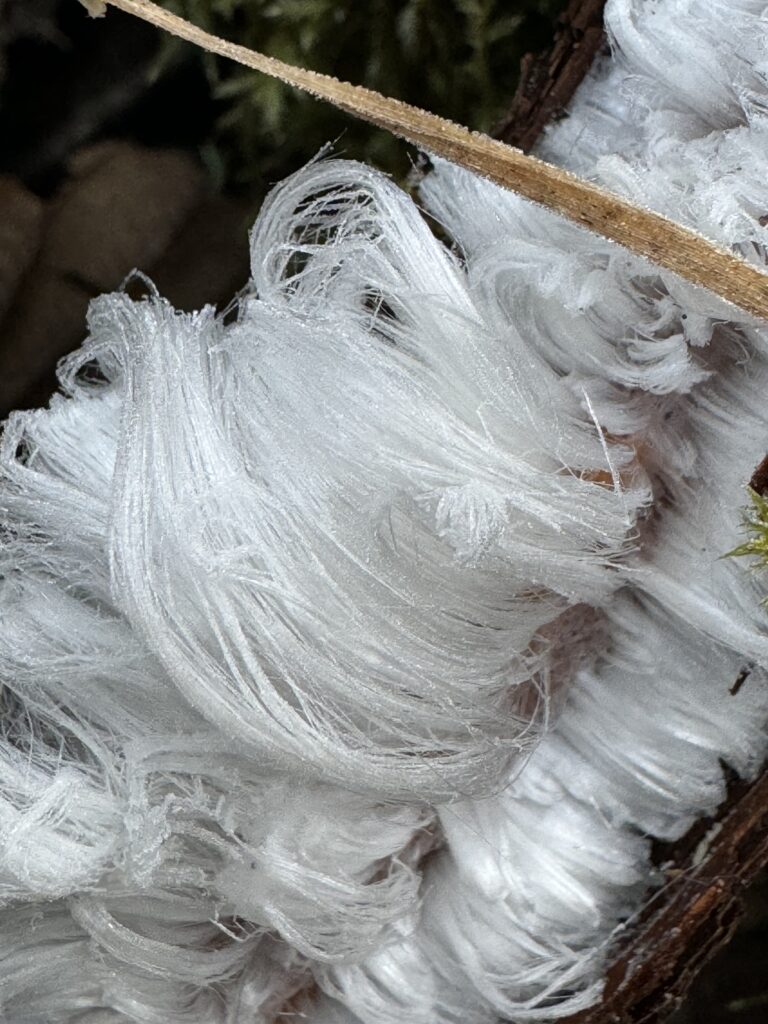
Overall, I’m very pleased with the results. The macro setting did not have the same issue it did with flowers. I think the flowers failed because the sensors got confused about what to focus on; with the frost flowers, it was a larger field of focus, so it didn’t get confused.
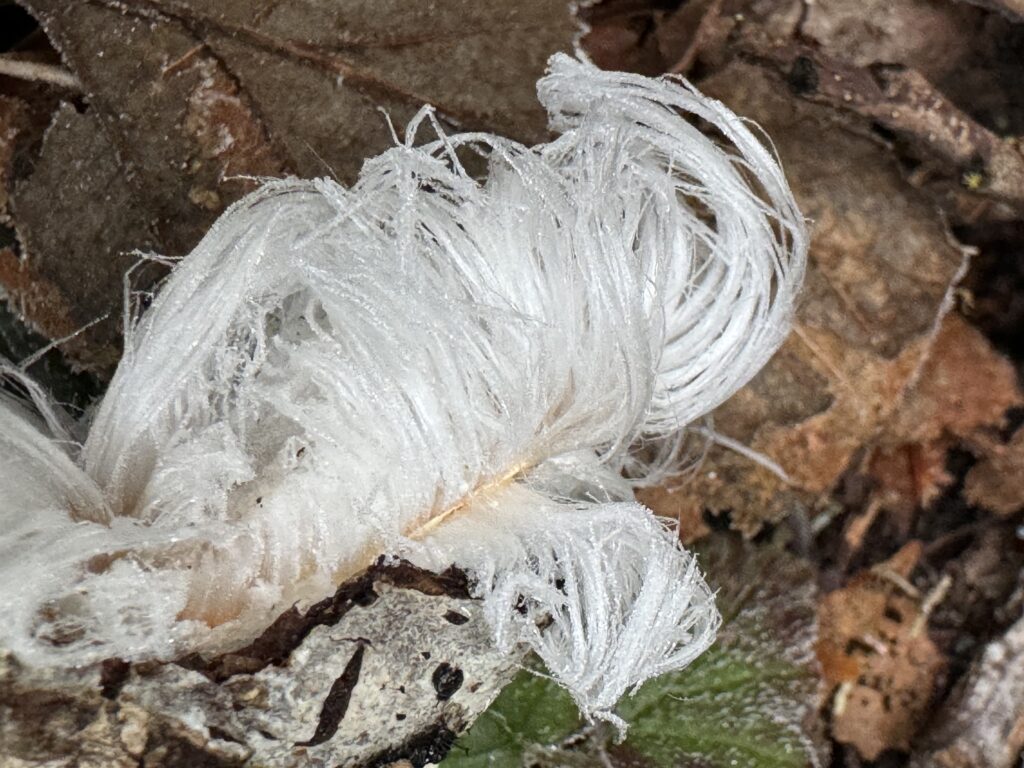
The macro setting allows me to focus close-in at least as well as the iPhone 10 plus hand lens, which is lovely. They have also done some fancy footwork to take care of the whiteout issue that I often had with the iPhone 10. Each strand really stands out.
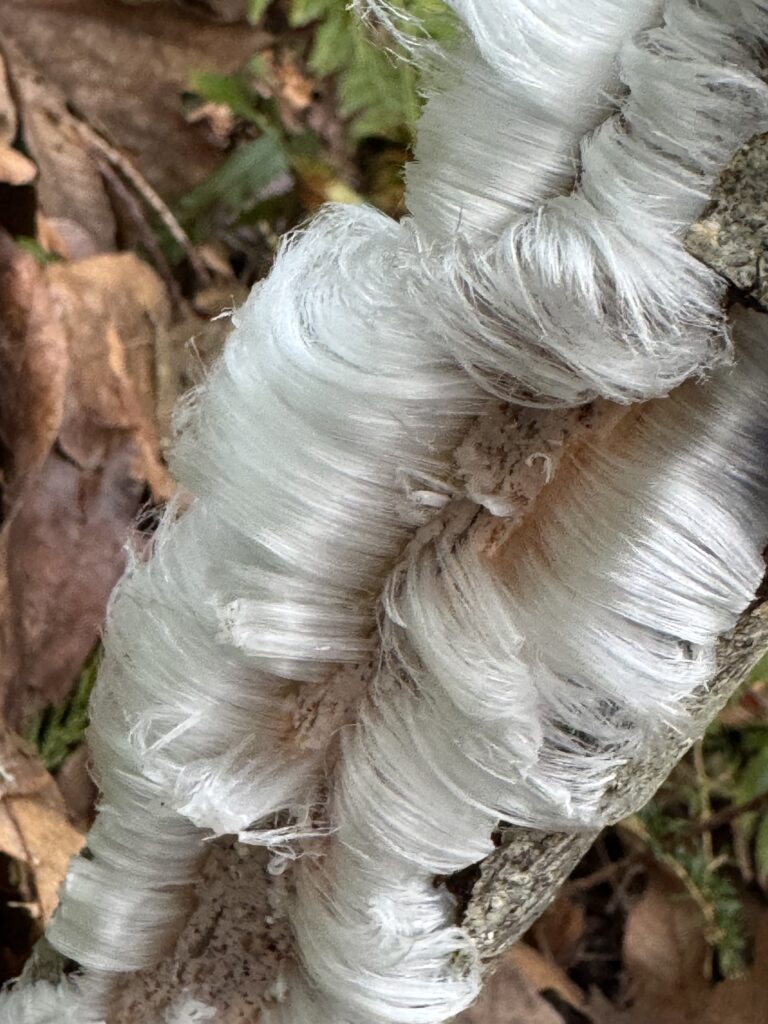
Is it hands-down better than the iPhone 10?
Well… no. I love that it captures all the detail, and makes it easier to see the individual strands. But I think its focus has some issues, and everything winds up looking super crystalline (partly as a result of the lighting fancy-footwork). The pictures lose some of the satiny quality of the frost flowers.
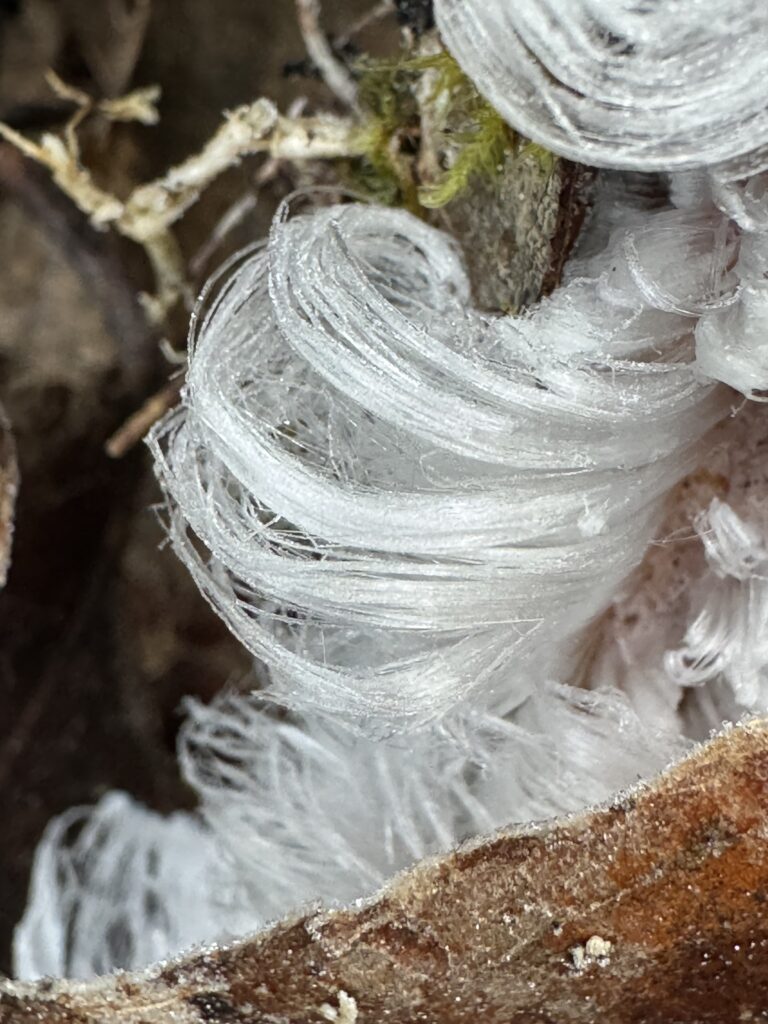
I feel like the best of my iPhone 10 photos were better than my iPhone 15 photos, but the conditions had to be just right. With the iPhone 15, I can easily capture the wonderful detail of the frost flowers, but the feel is a little different. And it can capture frost flowers that would have just been a mass of white in the iPhone 10, such as this candy-floss type.
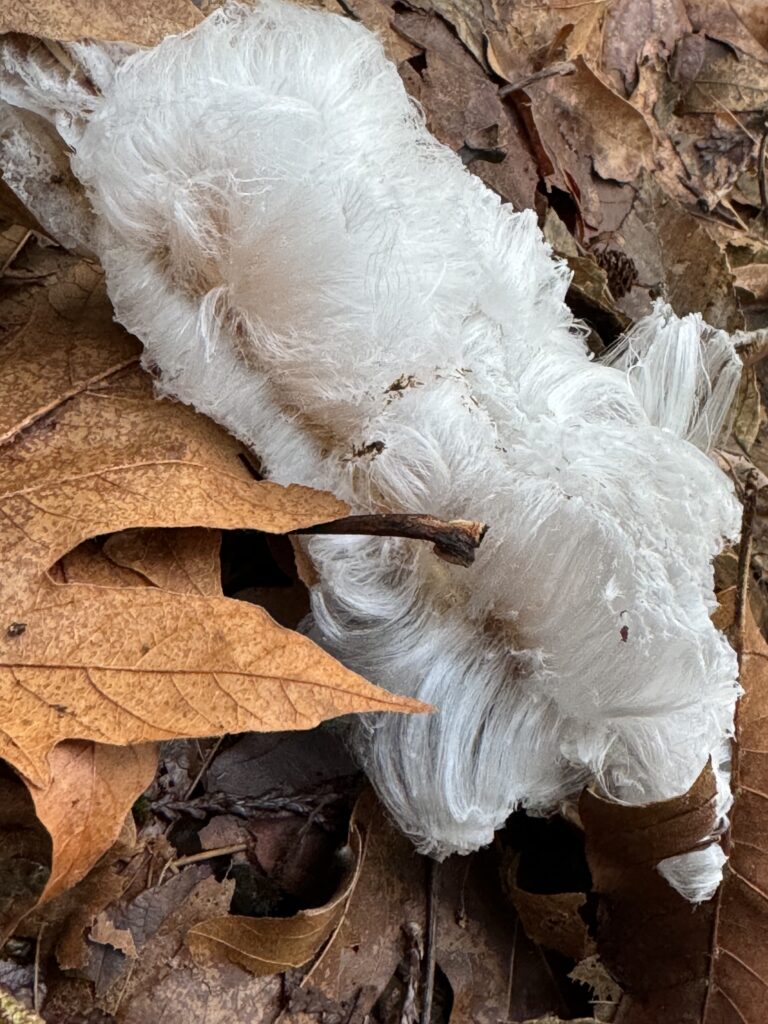
Anyway, I’m generally pleased, but I really hope Apple fixes the macro focus issues before (botanical) flower season is here in earnest!
